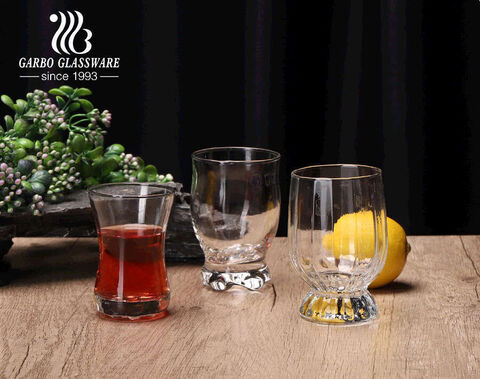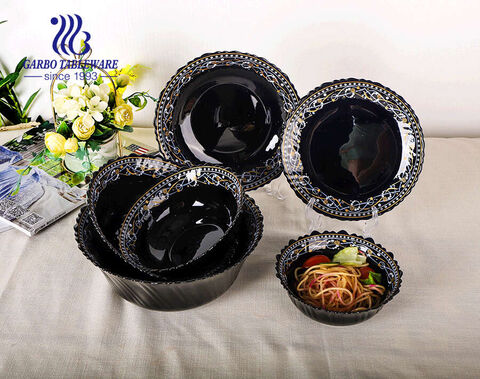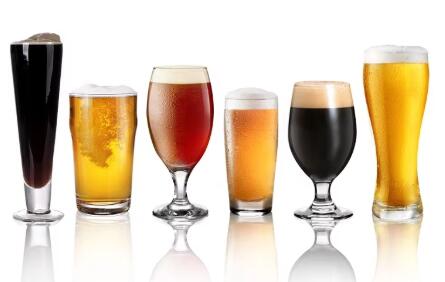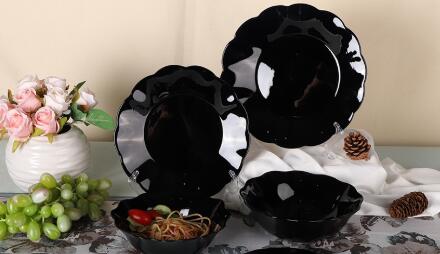The different crafts to make a glassware product
Pulished on Nov. 25, 2021The powder and clinker mixed according to glass composition are melted in a crucible furnace or pool furnace (see glass furnace). After melting, they are clarified into a uniform liquid glass without air bubbles, stones, and stripes, and then cooled to a viscosity range that meets the requirements of the corresponding molding method. To carry out various molding operations. The last step is molding, to convert the molten liquid into a solid, it must be between a certain temperature, this is a cooling process. We use different molding methods to make different glass products. Here are some different molding methods for your reference.
1. Blow molding:
There are two ways: manual blowing and mechanical blowing. During handblown molding, the hand-held blowpipe picks up the material from the crucible or the feed mouth of the tank kiln and blows into a device shape in the iron mold or wood mold. Smooth round products are used by rotary blowing; products with convex and concave patterns or non-circular shapes are used by machine blowing. First, pick colorless material to blow into small bubbles, and then use small bubbles to pick color material or opaque material to blow into the shape of the device is called sleeve material blowing. The color fusible particles are attached to the opaque set material, and the natural melt of all colors can be blown into natural scenery utensils; the ribbon opaque material on the color materials can be blown into wiredrawing utensils. Mechanical molding is used for blowing large quantities of products. After receiving the material, the blowing machine will automatically close the iron mold and blow into a device shape, and after molding, the cap mouth will be removed to form utensils. You can also use pressure-blow molding, first flush the material into small bubbles (prototype), and then continue to blow into the shape of the instrument. It has higher blowing efficiency and better quality than simply using a blowing machine. The price of manual blowing is relatively high, which is suitable for making some works of art and products with strange shapes, and the thickness of manually blown products is also thinner than that of other products. Machine blowing can also make some special-shaped products, the price is lower than manual blowing, general special-shaped products can be considered to use machine blowing to save costs.

2. Pressing molding:
In artificial molding, the manual material is cut into the iron die, the punch is driven, pressed into the shape of an instrument, and the product is formed by molding after solidification.
In the automatic production of mechanical molding, the glass solution is dropped into the iron mold with the material dropper, and then the punch is pressed down, and the product is formed after solidification and shaping, which is large in batch and high in efficiency compared with manual molding. Pressing molding is suitable for small instrument-shaped products with large bottom and exit punches, such as conventional cups, plates, ashtrays, and so on. If the mouth is smaller than the bottom of the product, it can not be applied to pressing molding, because once the punch is pressed, it can not be punched out. Therefore, the pressing molding process has higher requirements for the device type and is more suitable for the conventional device type with largemouth and small bottom.
3. Centrifugal molding.
The material is in the rotating mold, and due to the centrifugal force produced by the rotation, the glass unfolds and clings to the mold, and is taken out after solidification. It is suitable for the forming of large glassware with uniform walls. We generally use some white jade glass tableware to use centrifugal molding to determine whether centrifugal molding you can observe the bottom of the product if the bottom of the bowl is very flat is centrifugal molding, and if there is a certain bending, it is pressing molding.

4. Free forming:
Also known as formless molding. Repeatedly bake and modify or heat-bond the material in front of the kiln with a manual pick-up. Because it is not in contact with the mold, the surface of the glass is bright and the shape of the product is smooth. Finished products are also called kiln glass products.
There are four main forming methods of glass products, the factory will generally choose the appropriate forming method according to the customer's requirements for quality and the type of the product, with the continuous development of glass technology, there may be other forming methods in the future.









